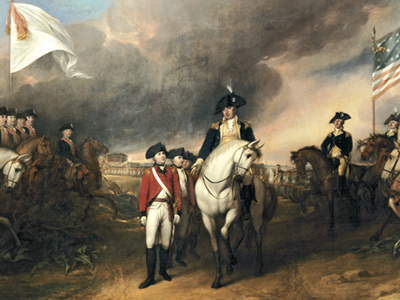American Revolutionary War (1775–1783)
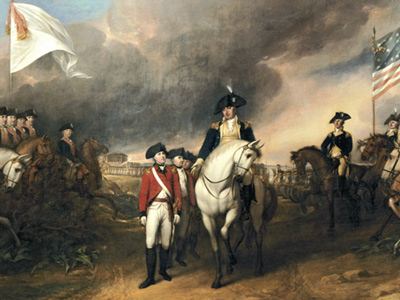
Final Years of the War (1781–1783)
Europe
After hostilities with the Dutch began in late 1780, Britain had moved quickly, enforcing a blockade across the North Sea. Within weeks, the British had captured 200 Dutch merchantmen, and 300 more were holed up in foreign ports, though political turmoil within the Republic and peace negotiations by both sides helped keep conflict to a minimum. The majority of the Dutch public favored a military alliance with France The Kingdom of France is the historiographical name or umbrella term given to various political entities of France in the medieval and early modern period. It was one of the most powerful states in Europe since the High Middle Ages. It was also an early colonial power, with possessions around the world. Colonial conflicts with Great Britain led to the loss of much of its North American holdings by 1763. The Kingdom of France adopted a written constitution in 1791, but the Kingdom was abolished a year later and replaced with the First French Republic. against Britain
The Kingdom of France is the historiographical name or umbrella term given to various political entities of France in the medieval and early modern period. It was one of the most powerful states in Europe since the High Middle Ages. It was also an early colonial power, with possessions around the world. Colonial conflicts with Great Britain led to the loss of much of its North American holdings by 1763. The Kingdom of France adopted a written constitution in 1791, but the Kingdom was abolished a year later and replaced with the First French Republic. against Britain The Kingdom of Great Britain was a sovereign country in Western Europe from 1 May 1707 to the end of 31 December 1800. The state was created by the 1706 Treaty of Union and ratified by the Acts of Union 1707, which united the kingdoms of England (which included Wales) and Scotland to form a single kingdom encompassing the whole island of Great Britain and its outlying islands, with the exception of the Isle of Man and the Channel Islands., however, the Dutch Stadtholder impeded these efforts, hoping to secure an early peace. To restore diminishing trade a Dutch squadron under Johan Zoutman escorted a fleet of some 70 merchantmen from the Texel. Zoutman's ships were intercepted by Sir Hyde Parker, who engaged Zoutman at Dogger Bank on 5 August 1781. Though the contest was tactically inconclusive, the Dutch
The Kingdom of Great Britain was a sovereign country in Western Europe from 1 May 1707 to the end of 31 December 1800. The state was created by the 1706 Treaty of Union and ratified by the Acts of Union 1707, which united the kingdoms of England (which included Wales) and Scotland to form a single kingdom encompassing the whole island of Great Britain and its outlying islands, with the exception of the Isle of Man and the Channel Islands., however, the Dutch Stadtholder impeded these efforts, hoping to secure an early peace. To restore diminishing trade a Dutch squadron under Johan Zoutman escorted a fleet of some 70 merchantmen from the Texel. Zoutman's ships were intercepted by Sir Hyde Parker, who engaged Zoutman at Dogger Bank on 5 August 1781. Though the contest was tactically inconclusive, the Dutch The Dutch Republic was a confederation that existed from 1579, during the Dutch Revolt, to 1795. It was a predecessor state of the Netherlands and the first fully independent Dutch nation state. Although the state was small and contained only around 1.5 million inhabitants, it controlled a worldwide network of seafaring trade routes. The income from this trade allowed the Dutch Republic to compete militarily against much larger countries. It amassed a huge fleet of 2,000 ships, initially larger than the fleets of England and France combined. fleet did not leave harbor again during the war, and their merchant fleet remained crippled.
The Dutch Republic was a confederation that existed from 1579, during the Dutch Revolt, to 1795. It was a predecessor state of the Netherlands and the first fully independent Dutch nation state. Although the state was small and contained only around 1.5 million inhabitants, it controlled a worldwide network of seafaring trade routes. The income from this trade allowed the Dutch Republic to compete militarily against much larger countries. It amassed a huge fleet of 2,000 ships, initially larger than the fleets of England and France combined. fleet did not leave harbor again during the war, and their merchant fleet remained crippled.
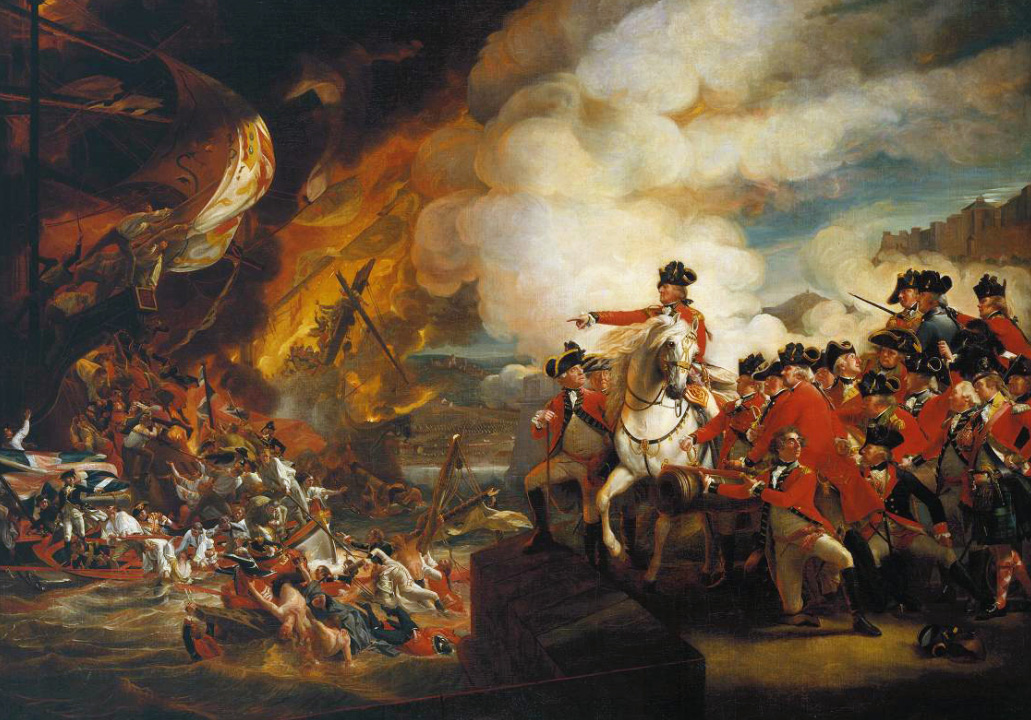
The Defeat of the Floating Batteries at Gibraltar, September 13, 1782, by John Singleton Copley
( Click image to enlarge)
On 6 January 1781, a French attempt to capture Jersey to neutralize British privateering failed. Frustrated in their attempts to capture Gibraltar, a Franco-Spanish force of 14,000 men under the Duc de Mahon met with more success in August; invading Minorca on 19 August. After a long siege of St. Philip's, the British garrison under James Murray surrendered on 5 February 1782, securing a primary war goal for the Spanish The Spanish Empire was a colonial empire governed by Spain and its predecessor states between 1492 and 1976. One of the largest empires in history, it was the first to usher the European Age of Discovery and achieve a global scale, controlling vast territory. It was one of the most powerful empires of the early modern period, reaching its maximum extent in the 18th century.. At Gibraltar, a major Franco-Spanish assault on 13 September 1782 was repulsed with heavy casualties. On 20 October 1782, following a successful resupply of Gibraltar, British ships under Richard Howe successfully refused battle to the Franco-Spanish fleet under Luis de Córdova, denying Córdova dominance at sea. On 7 February 1783, after 1,322 days of siege, the Franco-Spanish army withdrew, decisively defeated.
The Spanish Empire was a colonial empire governed by Spain and its predecessor states between 1492 and 1976. One of the largest empires in history, it was the first to usher the European Age of Discovery and achieve a global scale, controlling vast territory. It was one of the most powerful empires of the early modern period, reaching its maximum extent in the 18th century.. At Gibraltar, a major Franco-Spanish assault on 13 September 1782 was repulsed with heavy casualties. On 20 October 1782, following a successful resupply of Gibraltar, British ships under Richard Howe successfully refused battle to the Franco-Spanish fleet under Luis de Córdova, denying Córdova dominance at sea. On 7 February 1783, after 1,322 days of siege, the Franco-Spanish army withdrew, decisively defeated.
Americas
In the West Indies, on 29–30 April 1781, a Royal Navy squadron under Samuel Hood was narrowly defeated by the French, led by the Comte de Grasse. de Grasse continued seizing British territories; Tobago fell on 2 June, Demerara and Essequibo on 22 January 1782, St. Kitts and Nevis on 12 February, despite a British naval victory on 25 January, and Montserrat on 22 February. In 1782, the primary strategic goal of the French and Spanish was the capture of Jamaica, whose sugar exports were more valuable to the British than the Thirteen Colonies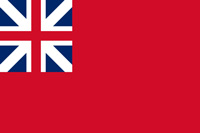 The Thirteen Colonies, also known as the Thirteen British Colonies, the Thirteen American Colonies, or later as the United Colonies, were a group of British colonies on the Atlantic coast of North America. Founded in the 17th and 18th centuries, they began fighting the American Revolutionary War in April 1775 and formed the United States of America by declaring full independence in July 1776. combined. On 7 April 1782, de Grasse departed Martinique to rendezvous with Franco-Spanish troops at Saint Domingue, and invade Jamaica from the north. The British under Hood and George Rodney pursued and decisively defeated the French off Dominica between 9–12 April. The Franco-Spanish plan to conquer Jamaica was in ruins, and the balance of naval power in the Caribbean shifted to the Royal Navy.
The Thirteen Colonies, also known as the Thirteen British Colonies, the Thirteen American Colonies, or later as the United Colonies, were a group of British colonies on the Atlantic coast of North America. Founded in the 17th and 18th centuries, they began fighting the American Revolutionary War in April 1775 and formed the United States of America by declaring full independence in July 1776. combined. On 7 April 1782, de Grasse departed Martinique to rendezvous with Franco-Spanish troops at Saint Domingue, and invade Jamaica from the north. The British under Hood and George Rodney pursued and decisively defeated the French off Dominica between 9–12 April. The Franco-Spanish plan to conquer Jamaica was in ruins, and the balance of naval power in the Caribbean shifted to the Royal Navy.
After the fall of Mobile to Spanish troops under Bernardo de Gálvez, an attempt to capture Pensacola was thwarted due to a hurricane. Emboldened by the disaster, John Campbell, British commander at Pensacola, decided to recapture Mobile. Campbell's expeditionary force of around 700 men was defeated on 7 January 1781. After re-grouping at Havana, Gálvez set out for Pensacola on 13 February. Arriving on 9 March, siege operations did not begin until 24 March, owing to difficulties in bringing the ships into the bay. After a 45-day siege, Gálvez decisively defeated the garrison, securing the conquest of West Florida. In May, Spanish troops captured the Bahamas, although the British bloodlessly recaptured the islands the following year on 18 April.
In Guatemala, Matías de Gálvez led Spanish troops in an effort to dislocate British settlements along the Gulf of Honduras. Gálvez captured Roatán on 16 March 1782, and then quickly took Black River. Following the decisive naval victory at the Saintes, Archibald Campbell, the Royal governor of Jamaica, authorized Edward Despard to re-take Black River, which he did on 22 August. However, with peace talks opening, and Franco-Spanish resources committed to the siege of Gibraltar, no further offensive operations took place.
Few operations were conducted against the Dutch, although several Dutch colonies were captured by the British in 1781. Sint Eustatius, a key supply port for the Patriots, was sacked by British forces under George Rodney on 3 February 1782, plundering the island's wealth.
India
Following Dutch entry into the conflict, East India Company troops under Hector Munro captured the Dutch port of Negapatam after a three-week siege on 11 October 1781. Soon after, British Admiral Edward Hughes captured Trincomalee after a brief engagement on 11 January 1782.
In March 1781, French Admiral Bailli de Suffren was dispatched to India to assist colonial efforts. Suffren arrived off the Indian coast in February 1782, where he clashed with a British fleet under Hughes, winning a narrow tactical victory. After landing troops at Porto Novo to assist Mysore, Suffren's fleet clashed with Hughes again Providien on 12 April. There was no clear victor, though Hughes' fleet came off worse, and he withdrew to the British-held port of Trincomalee. Hyder Ali wished for the French to capture Negapatam to establish naval dominance over the British, and this task fell to Suffren. Suffren's fleet clashed with Hughes again off Negapatam on 6 July. Suffren withdrew to Cuddalore, strategically defeated, and the British remained in control of Negapatam. Intending to find a more suitable port than Cuddalore, Suffren captured Trincomalee on 1 September, and successfully engaged Hughes two days later.
Meanwhile, Ali's troops loosely blockaded Vellore as the East India Company regrouped. Company troops under Sir Eyre Coote led a counter-offensive, defeating Ali at Porto Novo on 1 July 1781, Pollilur on 27 August, and Sholinghur on 27 September, expelling the Mysorean troops from the Carnatic. On 18 February 1782, Tipu Sultan defeated John Braithwaite near Tanjore, taking his entire 1,800-strong force prisoner. The war had, by this point, reached an uneasy stalemate. On 7 December 1782, Hyder Ali died, and the rule of Mysore passed to his son, Tipu Sultan.
Sultan advanced along the west coast, laying siege to Mangalore on 20 May 1783. Meanwhile, on the east coast, an army under James Stuart besieged the French-held port of Cuddalore on 9 June 1783. On 20 June, key British naval support for the siege was neutralized when Suffren defeated Hughes' fleet off Cuddalore, and though narrow, the victory gave Suffren the opportunity to displace British holdings in India. On 25 June, the Franco-Mysorean defenders made repeated sorties against British lines, though all assaults failed. On 30 June, news arrived of a preliminary peace between the belligerent powers, and the siege was effectively over when the French abandoned the siege. Mangalore remained under siege, and capitulated to Sultan on 30 January 1784. Little fighting took place thereafter, and Mysore and Britain made peace on 11 March.
HISTORY
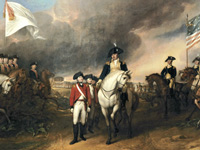
RESOURCES
This article uses material from the Wikipedia article "American Revolutionary War (1775–1783)", which is released under the Creative Commons Attribution-Share-Alike License 3.0.
© Stories Preschool. All Rights Reserved.
